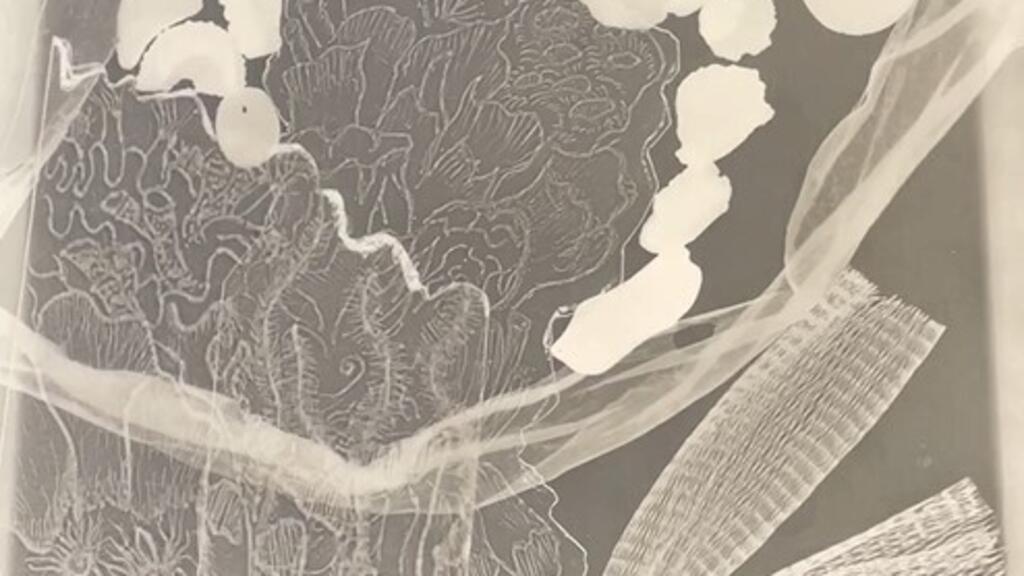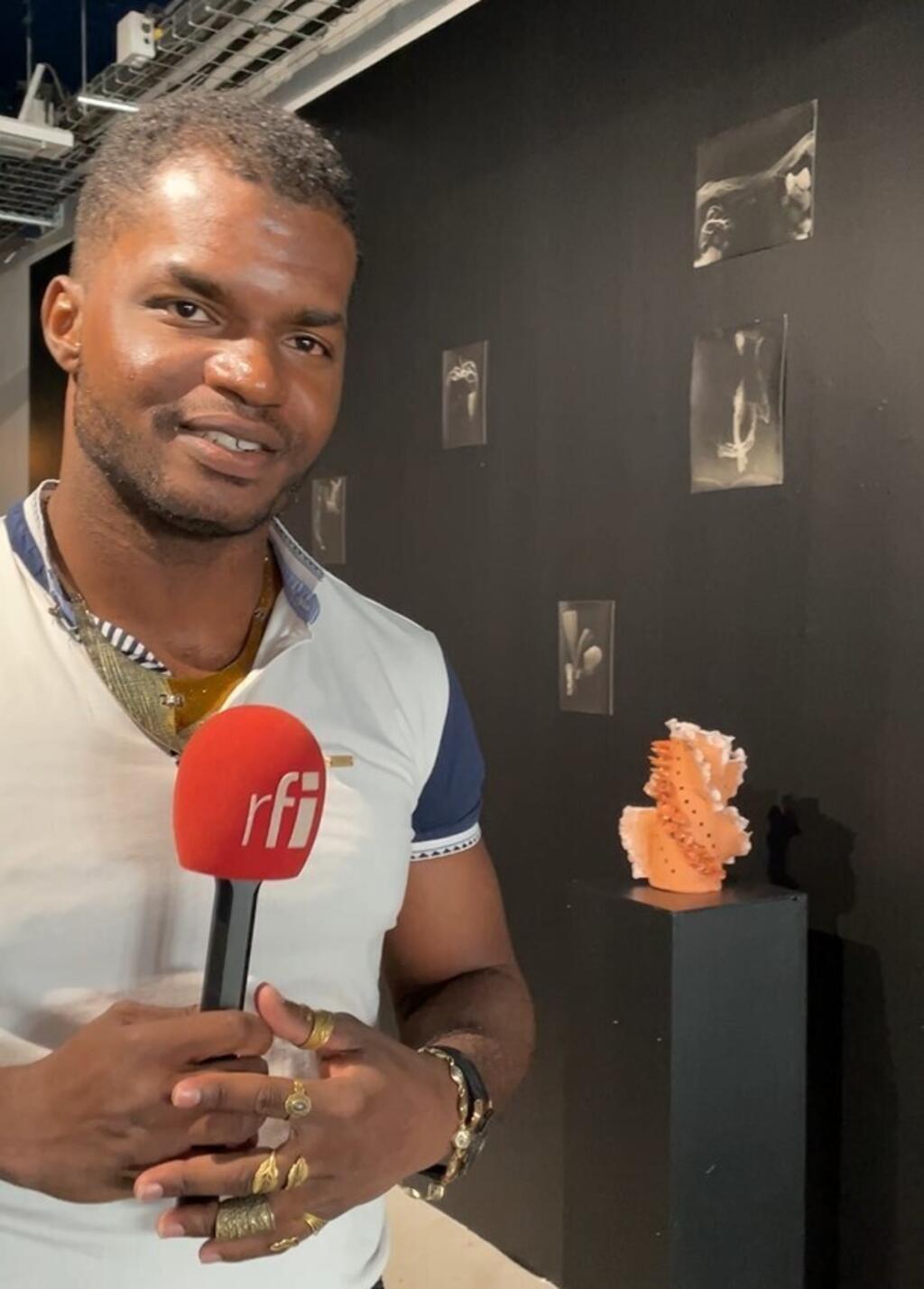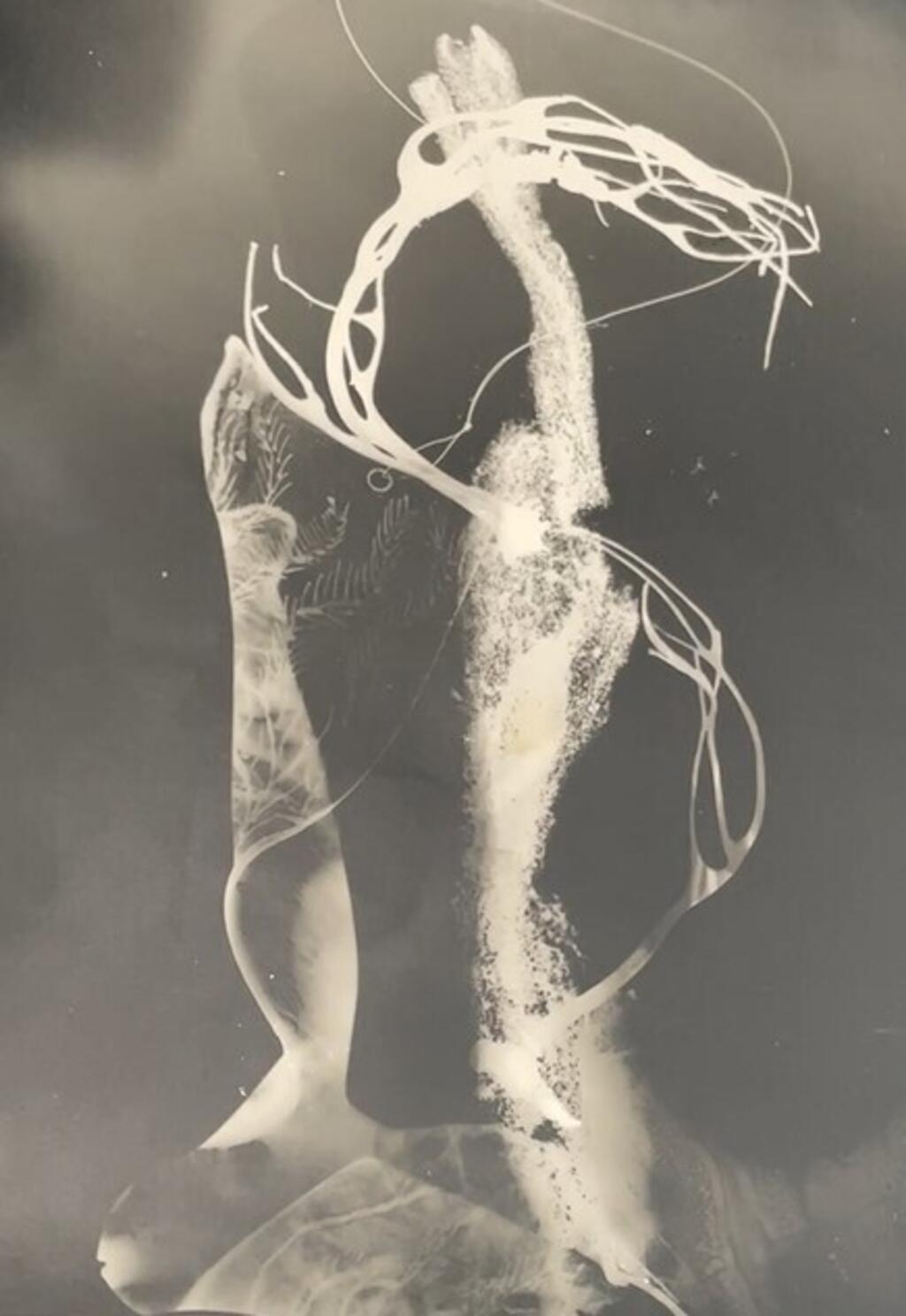
The hidden world of coral reefs is home to thousands of plant and animal species. But it's a world under threat from pollution and the coral bleaching caused by global warming. Hervé Lechar, an artist from Martinique, uses his work to communicate his love for the sea, while issuing a stark warning for its future.
Recently graduated from the Caribbean Campus of Arts in Martinique, one of France’s 42 public art and design schools, Lechar is representing the school at a new exhibition just outside Paris entitled "Double Trouble".
The exhibition is part of the Art Emergence event, which showcases young artists and provides them with mentoring.
Lechar's "Eye Sea the Invisible" project explores themes of memory and traces left behind, using both photographic techniques and ceramic sculpture.
"My work is all about light. It’s a tool to help me reveal what is invisible," he told RFI at the opening of Art Emergence.

'A memory within a memory'
His delicate black and white images appear to be abstract, but on closer inspection white shapes of coral and algae appear, silhouetted on the pitch-black background.
He documents an unknown underwater universe, paying homage to the sea – an integral part of his life since his childhood on the French Caribbean island of La Martinique.
Using a technique that produces what are known as "rayograms", made famous by surrealist artist Man Ray, he places objects, such as coral, directly on to sheets of photosensitised paper and exposes them to light, without using a camera.
This allows him to play with contrasts, to highlight what he calls "absence and presence".
"These are my memories, my treasures that I have collected and used," he says of the coral he uses in the works. "My technique makes traces of them, it’s a memory within a memory."
Coral bleaching
Lechar points to tiny pieces of plastic that appear in his work, saying sadly that plastic pollution has become omnipresent in the ocean, much of it invisible to the naked eye.
He has also noticed that the coral is changing colour, in some cases dying, due to an increase in ocean temperatures which "bleaches" the corals.
This phenomenon – linked to climate change – has been recorded across the globe in tropical waters, from the Caribbean to Asia and Australia.
Great Barrier Reef bleaching crisis 'like a bushfire underwater'

In one of his images, he points to something resembling a flame. "This makes me think of fire, and as we know, heat is harmful to corals."
He points to this as an element of paradox in this work, because the presence of these dangerous elements makes the images more intriguing and, in some ways, more beautiful.
"There is clearly a committed message about the environment, but it is also mixed with my experience and my personal history. How I have understood the marine world, how I feel about it and how I see it in the future," Lechar says.
By bringing this visual exploration to a wider public, he hopes to share his admiration for the natural realm – and his fears over the death of coral reefs.
Maison Gaston, the virtual art gallery promoting Caribbean creativity
National platform
The first collective exhibition of its kind, Art Emergence aims to highlight the diversity of the future contemporary art scene at a national level.
Organisers Artagan worked with public and private bodies to bring together an exhibition, a multi-arts festival and open days in artists’ workshops, and also provides a mentoring programme for the young artists involved to learn how to make a living from their craft.
One of the three curators of "Double Trouble" is Temitayo Olalekan, a multidisciplinary artist from Nigeria, now based in Marseille.
He says the Art Emergence event is unique because it gives graduate art students a major national platform – exposure not often granted to young artists at the beginning of their career.
Explaining their works to journalists and visitors is also part of the challenge.
"It’s extremely gratifying to see the artists evolving and speaking about their portfolios," he told RFI.
Art Emergence runs until 2 November.







